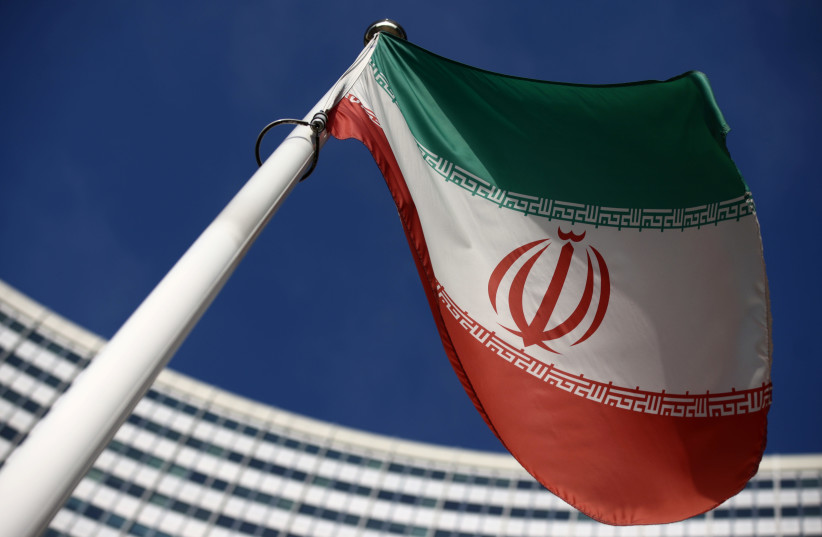A recent headline, “Biden lifts sanctions on two Iranian missile producers,” raises a concern that the US president may well be setting into motion the final stages leading to his declared campaign goal of re-upping the 2015 Joint Comprehensive Plan of Action, the Iran nuclear deal. The news, shortly on the heels of America seemingly abandoning the Afghan people to the will of the Taliban, may be the final straw in Middle East destabilization.
It’s perplexing that the US and the other signatories to the original JCPOA appear willing to once again overlook the red flags that accompanied Iran early on and continue through the present.
Although US President Joe Biden’s administration projects the assumption that the JCPOA stands the best chance for curtailing Iran’s nuclear ambitions, including its potential manufacture of nuclear weapons, history to date appears to contradict this optimistic assertion.
Within the 2015 agreement, Iran committed to a protocol that allows inspectors from the International Atomic Energy Agency, the UN nuclear watchdog, unfettered access to its nuclear facilities, as well as any potentially “undeclared sites.” Subsequently, however, this appeared dependent on Iran’s disposition at the moment.
Is Iran more trustworthy now than in 2015?

Iran was alleged to have had a covert nuclear program as early as 2002. In 2009, the existence was revealed of its Fordow Fuel Enrichment Plant, a uranium enrichment facility running an indeterminate number of centrifuges.
“The 2015 nuclear deal capped uranium enrichment at 3.67%, a rate generally acknowledged as suitable for civilian energy uses. Weapons grade uranium is considered 90%.” Iran has moved significantly past the lower number and toward the latter, which does not speak well of its claim of peaceful nuclear purposes.
“The IAEA has since gauged Iran... enriching uranium up to 60% fissile purity, from 20% in April. In mid-August, the IAEA…(further) informed member states that Iran may be using a second cascade (of centrifuges), effectively doubling the rate of production.”
In 2017 a plan to reconstruct the Arak heavy-water nuclear reactor posed a basis for additional concern “as fuel spent from a heavy-water reactor may prove more suitable for nuclear weapons.”
The concept of “breakout” may prove a mute point should Iran’s science be as far along as some suspect.
Woefully, the IAEA is incapable of inspecting and assessing Iranian nuclear facilities and capabilities with seemingly unpredictable access.
The “sunset” provisions within the JCPOA set restrictions on Iran’s enrichment program that would lift after 10 years, thereby drawing an inference that Iran could then proceed unfettered to its nuclear agenda including a potential for nuclear weapon development.
America and the other countries currently involved in the present Vienna discussions must not dismiss Iran’s past as not indicative of future conduct.
US National Security Advisor Jake Sullivan echoed the president’s “repeated unconditional commitment of ensuring Israel’s security,” unequivocally. “The United States will... never allow Iran to obtain a nuclear weapon.” All the while, the president seems to also promote an ability to overcome differences with adversaries based upon the “ability to recognize our common humanity.”
Platitudes can only go so far, especially when Biden appears to leave out the secret sauce as to how he intends to guarantee this pivotal commitment to Israel. After all, the original 2015 accord language failed to explicitly prevent Iran from “ever” developing nuclear weapons or from developing a sophisticated missile payload delivery program.
In addition, it also seemingly neglected to establish regulatory oversight regarding the billions of dollars that were forthcoming, some of which may have found its way to further enable Iran’s destabilizing agents: Hamas, Hezbollah and various militias; as well as Syrian President Bashar Assad’s dictatorship.
Beyond the above, there remains an ostensibly menacing circumstance reported by a number of news sources on March 21 and 22: alleged threats sourced to Iran appeared to target Fort McNair, a US Army post in Washington, as well as the army’s vice chief of staff, whose residence was on the base.
If found credible, Iran should not be rewarded with financial or other incentives, including its demands to reverse existing sanctions. Iran needs to prove itself as something other than an active threat to America’s only proven ally in the Middle East, Israel, as well as potentially to America, itself. Chants from within Iran of “Death to Israel!” and “Death to America!” can still be recalled.
Perhaps, everything considered, it is best for the Vienna participants to put the brakes on their Iranian nuclear discussions until the above concerns can be addressed and resolved to the satisfaction of all, including the parties most vulnerable.
The writer is the author of First the ‘Saturday People’ and then the ...
